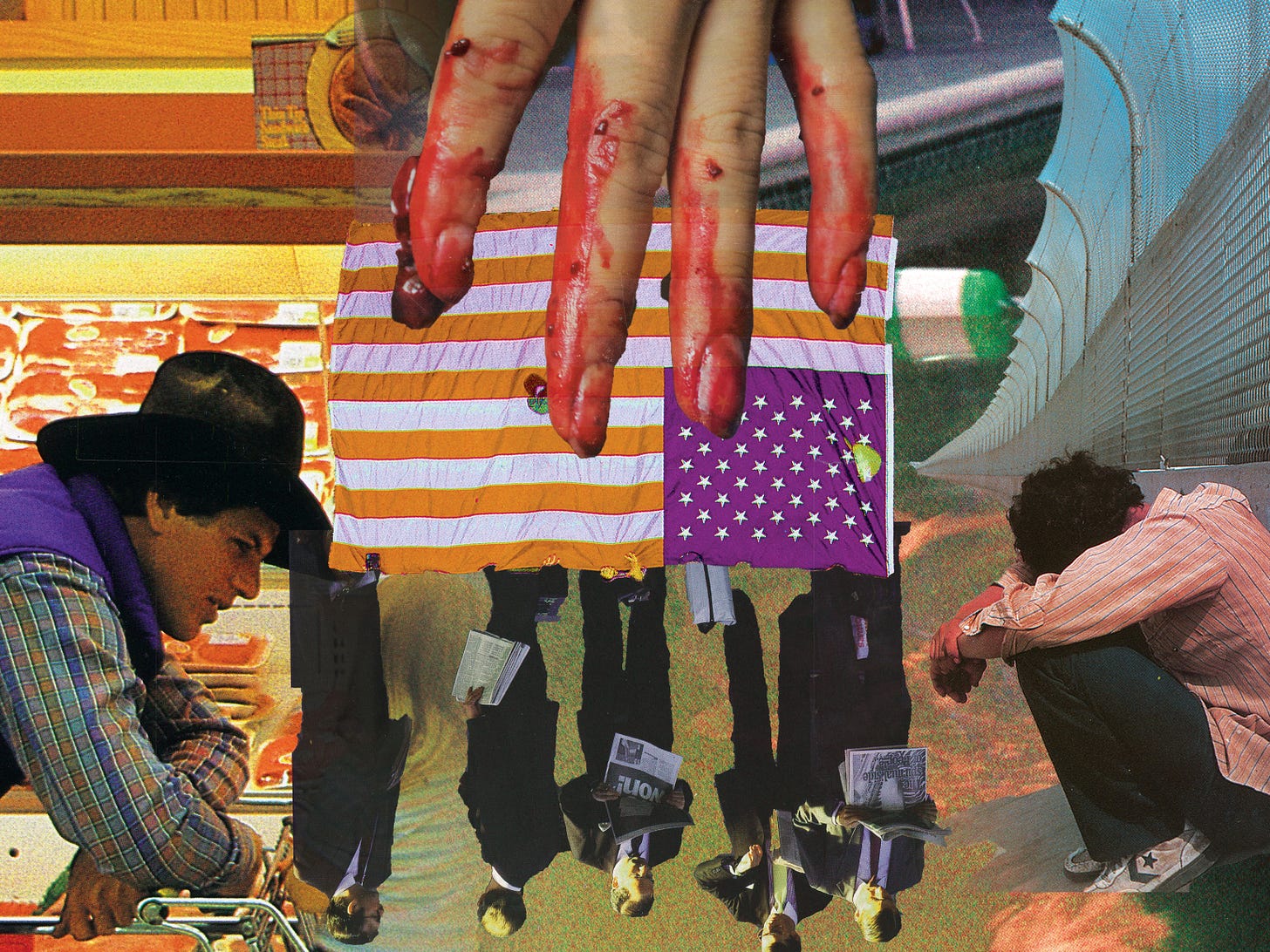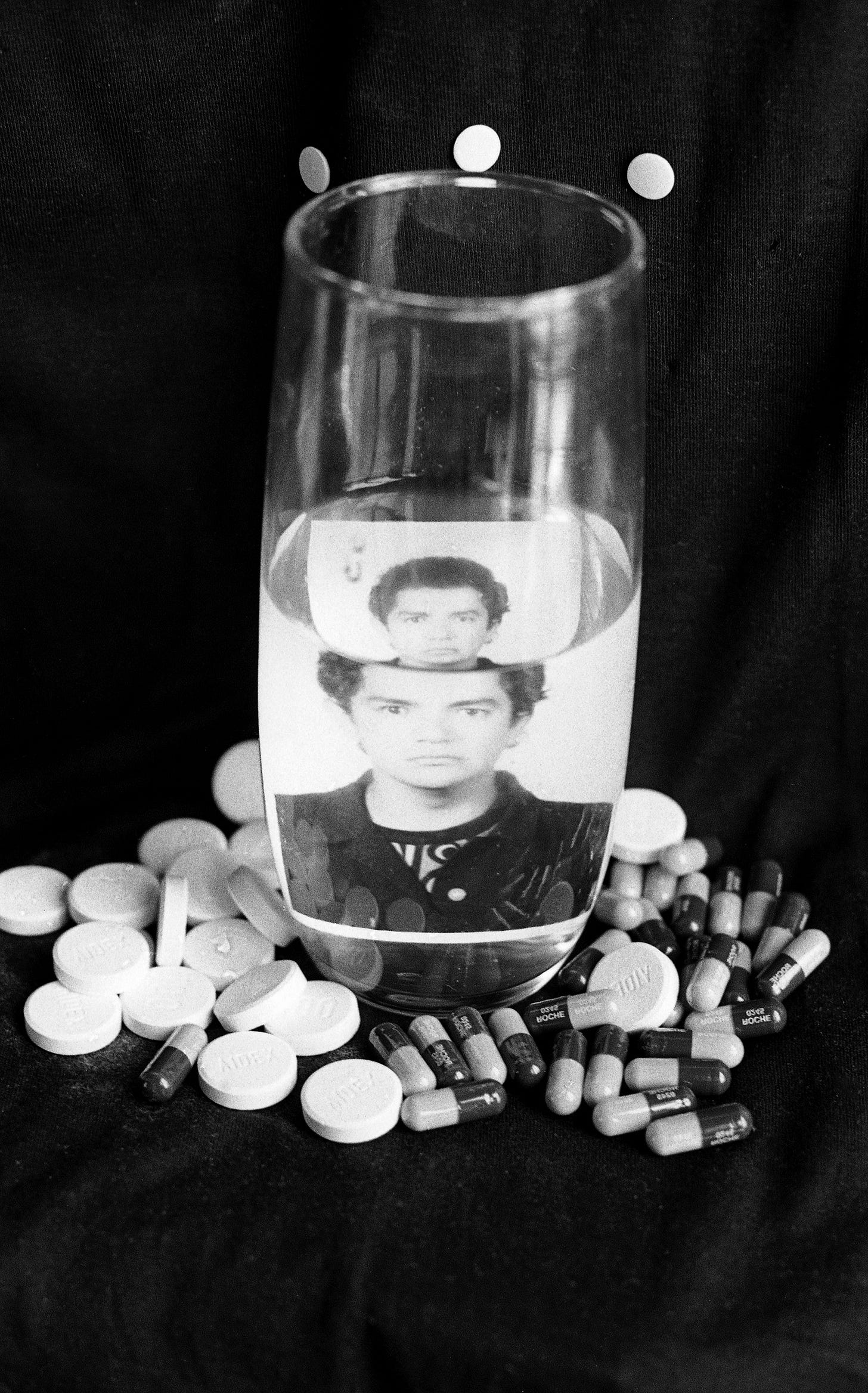Documenting Collapse
October 5, 2020
As interwoven crises reveal the unjust nature of the world’s underlying power structures, photography serves as a valuable tool to examine societal, governmental, and environmental collapse. In this newsletter, I hope to curate a selection of photographic projects which document the issues which threaten our planet and communities, offer resistance to unjust authority, and envision the world we could hope to build.
The Normalization of Collapse

Indi Samarajiva urges the world to accept the reality of American collapse in a Medium article about his experiences living through the end of the civil war in Sri Lanka. Reflecting upon his privileged position, Samarajiva examines his phone’s camera roll as a way to evoke the danger of letting injustice become background noise to everyday life.
Image: created by author.
Archiving AIDS Activism in the Midst of COVID-19

Museo Universitario Arte Contemporáneo’s exhibition The Seropositive Files: Visualizing HIV in Mexico opened at the start of 2020, but in the midst of COVID-19 crisis, the work takes on a new meaning. Sol Henaro, a curator, spoke to María Minera in an interview with Aperture Magazine about the history of AIDS activist photography in Mexico, the evolving stigmas surrounding HIV/AIDS, and what we can learn from the governmental, pharmaceutical, and societal response to HIV in the age of COVID-19. The exhibition has since closed, but a free download of the show’s publication is available on their website.
Image: “Ajustada Cárcel Que Me Cubre (This cramped prison that covers me),” by Óscar Sánchez Gómez, 1997, Visualities and HIV in Mexico Collection, MUAC, Mexico City, published by Aperture Magazine, 2020.
Notions of Invisibility in the Age of Zoom
As the COVID-19 crisis forces schools across the country to go online, teachers, students, and families have struggled with the sudden intrusion of school expectations into home life. A recent opinion piece in the New York Times, “Distance Learning, With Shades of Big Brother,” relates the all-seeing eye of Zoom to Michel Foucault’s study of the panopticon, revealing the authoritarian nature of school districts’ online learning policies. The use of camera surveillance extends to the alarming use of facial recognition software by government agencies like ICE, as reported by the accountability nonprofit Tech Inquiry.
Artist Hito Steyerl created How Not To Be Seen: A Fucking Didactic Educational .MOV File in 2013, but the work continues to hold value in 2020. In this surreal video guide to being invisible in the modern world, Steyerl explores how the proliferation of photographic surveillance strips individuals of their ability to be unseen by the authorities who wish to track their movements. Steyerl’s work pushes the viewer to question the control institutions and structures hold over our rights, representation, and lives.
Video: "How Not to be Seen: A Fucking Didactic Educational .MOV File,” by Hito Steyerl, 2013. Available to stream for free through Artforum.


